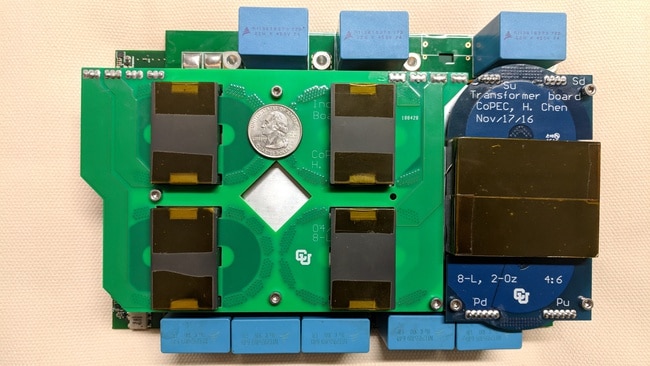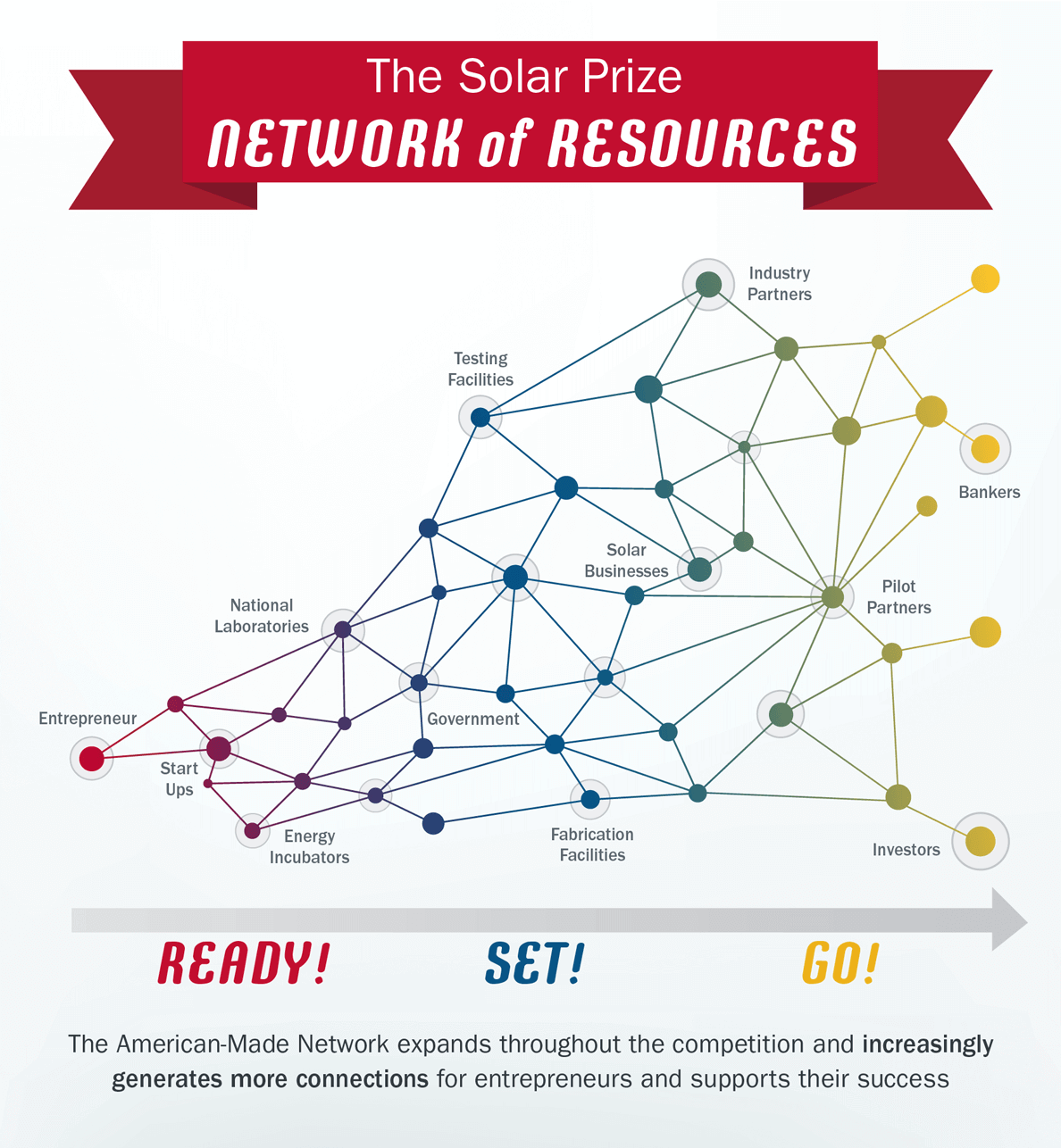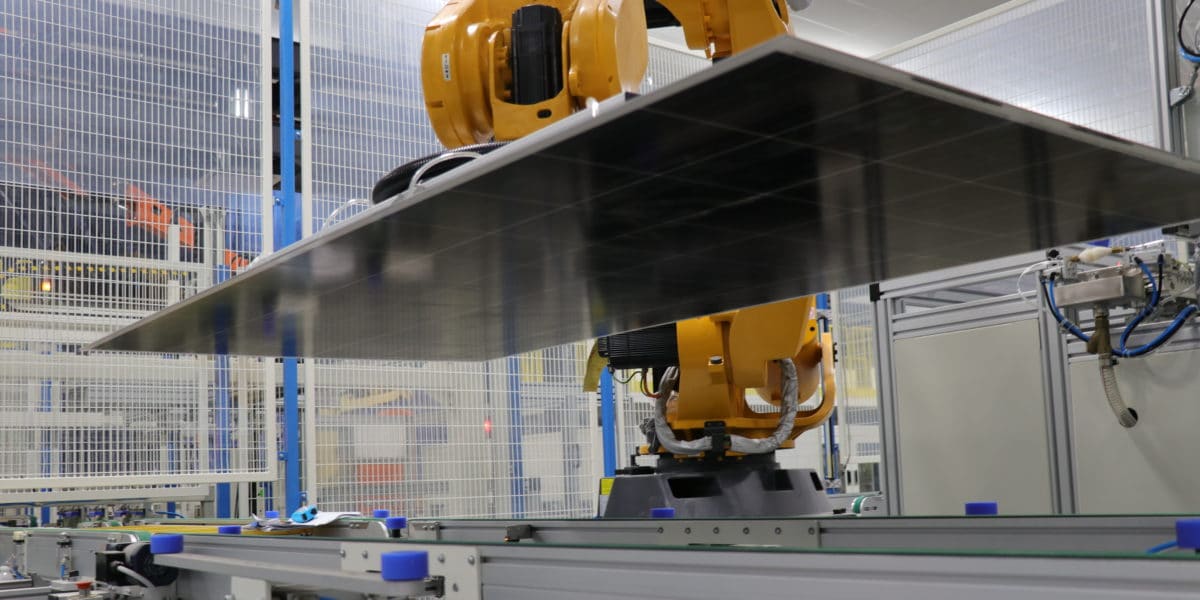The U.S. Department of Energy’s (DOE) National Renewable Energy Laboratory (NREL) has announced the ten finalists in the first round of its American-Made Solar Prize. Each team is given $100,000 and continue on to the final phase, ‘Go! Contest’, of the first round of the competition where contestants will be aiming to develop a prototype and find a pilot partner.

The winners of the contest are:
- BREK Electronics Corp. – BREK is lowering cost of inverters and balance of system needs via a silicon-carbide-based composite architecture for string inverters that allows direct connection to transmission infrastructure.
- Catalyst – Catalyst sells solar in a single module, expandable, plug-in “solar appliance” that simplifies rooftop solar installation and expedites project payback.
- Crystal Sonic – Crystal promises a low-cost manufacturing technique for ultra high efficiency solar cells (30%+).
- Imagen – Imagen has developed an energy efficient and economic decentralized modular power electronics/energy storage system for 1500 volt-DC PV systems.
- Omnisole – ballasted racking system that greatly reduces installation time, with no roof penetrations, and can be used on steep roofs.
- Phase3 Photovoltaics – seeking residential solar pricing at $1.60/W when integrating PV power integration systems in manufactured homes during the manufacturing process.
- Solar Guardian – building hardware at 40¢ per watt-DC that sees faults before the arc occurs, and that meets the NEC code requirements.
- Solar Inventions is creating a new cost-effective photovoltaic cell design that increases power, improves shading response, decreases hotspot risks, and produces a more reliable module.
- Solar SEED – SEED has developed a voltage controller offering scalable AC/DC electricity and emergency backup power for <500W solar systems.
- Tandem PV – combining perovskites and silicon in a tandem solar cell.
Submissions to finals of Round 1 are are due in September. Up to two final winners will be selected after another demo day and pitch session at Solar Power International in Salt Lake City. The judges will examine how well the competitors have advanced their solution from proof of concept to a refined prototype. They also must have found a partner to perform a pilot test of their prototype solution.
From a high level, one must even consider the market value of the technologies that didn’t win in this contest (located in “Semifinalists” section), the energy developed around the ideas, the experiences gained by those involved and wonder how much broader value we’re creating in the manufacturing ecosystem of solar power – one of the clearly stated goals of the program.
Per Debbie Brodt-Giles, prize administrator for NREL:
We’ve seen them test the viability of their ideas and make quick progress with the help of our industry partners and members of the American-Made Network. The best part of this competition is the partnership between the Network and teams, watching them quickly overcome hurdles and accelerate progress toward their prototyping and market-ready potential.
Part of the program’s goal – beyond finding specific technologies to support – is to build out the supply chain to pump the broader product development and manufacturing ecosystem within the United States. To this end they are envisioning the aforementioned American-Made Network (below is image of the concept).

NREL is continually accepting new experts to join the network via the Connector Partner program (here is a map of current Partners). Payments for the service range from $25,000 through $200,000 based on recruiting competitors and winners in the American Made Solar Prize contest.
This content is protected by copyright and may not be reused. If you want to cooperate with us and would like to reuse some of our content, please contact: editors@pv-magazine.com.









Item, 2 seems like the current Enphase Energy solar PV panel with micro-inverter per panel. One can grow their system one panel and micro-inverter at a time. The Catalyst claim is $375 per panel. Kind of a solar PV energy account. Could one put $375 a year into a bank account? Then one can put an increasing solar PV output system on their roof one panel at a time.
Item, 1, bring it on. High power inverters using SiC drivers can be designed for harsh temperatures without having to resort to electro-mechanical cooling fans, just oversized heat sinks. Making the typical inverter more robust and temperature fail resistant. Imagine using SiC for hybrid inverters where the battery charger is using high buss voltages of the typical string inverters. Bringing the buss voltage up will allow old string inverter systems to interface with an ESS without a lot of system rewiring.
Item 10, tandem PV. Getting the solar PV panel to the 30% plus harvest efficiency will allow more bang for the buck. Overbuilding one’s solar PV system, then charging an ESS during the day could well put the solar PV system in charge of the home’s energy needs for 16 hours a day, maybe more.